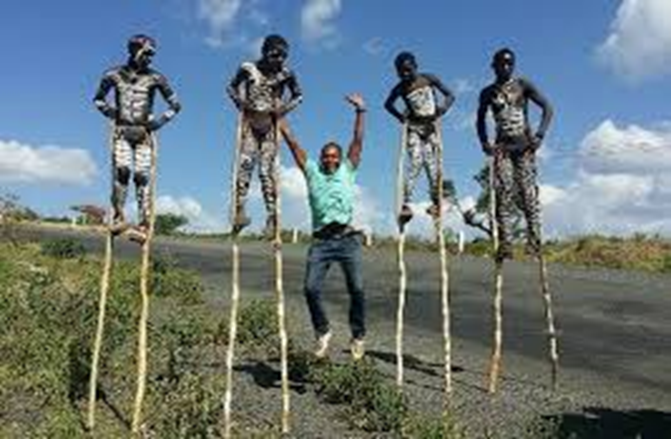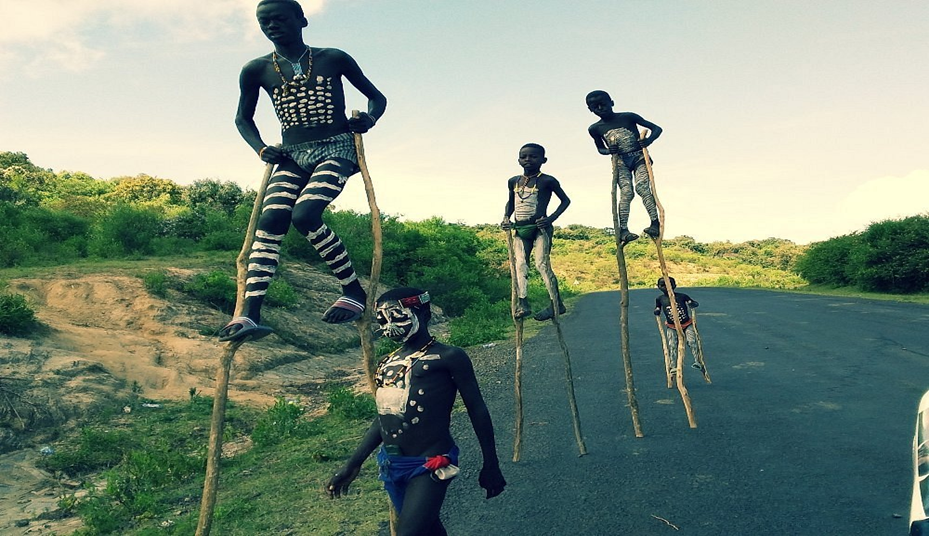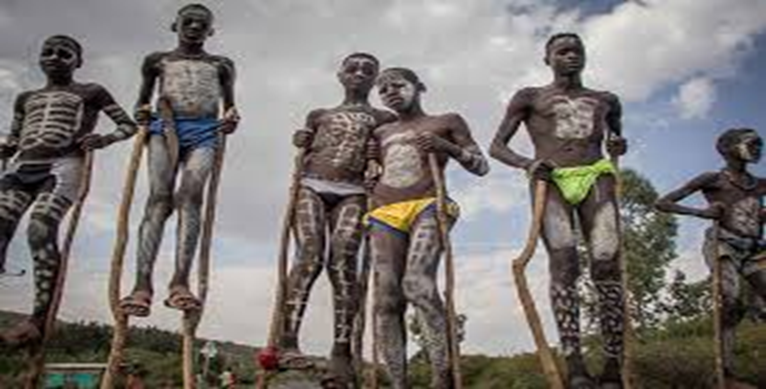
To the untrained eye, it might look like an art performance, but to the Banna, it’s a sacred tradition that ties their feet quite literally to their ancestors. The Banna (or Benna) people reside in the Lower Omo Valley of southwestern Ethiopia. Their tradition of walking on tall wooden stilts, which can reach several meters in height, is a practice with both practical and profound cultural meaning.
The Stilts are particularly used by unmarried young men or boys called “Tewa” and mastering the difficult feat of stilt walking symbolizes their transition from youth to maturity. It demonstrates that they possess the balance, physical strength, responsibility, and confidence needed to take on adult duties, like a “lion.”
The stilts are crafted from local wood and require immense physical aptitude, balance, and strength to maneuver, with skilled walkers performing complex footwork and dance-like motions.

Historically, Tewa walked on stilts as a mechanism to avoid attack by wild animals while herding cattle.
However, this is not the only reason why stilts are common in this part of southwestern Ethiopia, it is said that the villagers used stilts to navigate flooded plains, tall grasslands, and move across soft or muddy ground, especially during the rainy season, without sinking but over centuries, it evolved into a symbolic dance. One that celebrates balance, courage, and connection to nature.
Unmarried young men walked on stilts during community festivals and rituals. A rule for Banna tribe stilts walking during a ceremony (weddings, harvest festivals or cultural gathering) is painting their bodies in white strips.
Aside from the stilts walking they are famous for their craftsmanship in a wide range of industries. They produce fine wood carvings, woven baskets. They are endowed with a wealth of indigenous knowledge. This includes sustainable resource management methods, farming methods, and traditional medical procedures.

Although the context has evolved, the tradition is very much alive and practiced today, while some reports suggest it is now mostly a “fun thing” for young boys, particularly in daily life, it retains its deep cultural significance during festivals and rituals. It has also become a major draw for tourists visiting the Omo Valley, which helps foster cultural pride and provides economic benefits to the community.
By: Idris Olayinka

